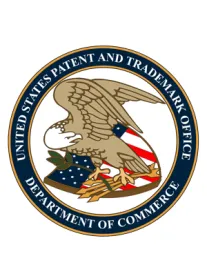On August 20th, the U.S. Patent and Trademark Office published proposed rules that would amend the consolidated set of rules currently governing Inter Partes Reviews, Post-Grant Reviews, Covered Business Method Reviews, and Derivation proceedings before the Office. Here are the top seven things patent practitioners and their clients should know about the proposed rules.
1) Testimonial Evidence in Support of Patent Owner’s Preliminary Response (“POPR”)
The Office proposed allowing a patent owner to submit new testimonial evidence with its preliminary response. Proposed Rules § 42.107 and § 42.207. This evidence would most likely come in the form of one or more expert declarations supporting the POPR. The Office also proposed amending the rules to provide that any factual dispute that is material to the institution decision will be resolved in favor of the petitioner solely for purposes of making a determination on whether to institute trial. Proposed Rules at 25. The Office stated that such a resolution would preserve the petitioner’s right to challenge statements made by the patent owner’s declarant. Id.
Under proposed rules § 42.108(c) and § 42.208(c), the petitioner will be afforded an opportunity to seek permission to file a reply brief to respond to a POPR that presents testimonial evidence, though the petitioner will not be able to file such a reply as matter of right. Id. and Proposed Rules at 25. The Office was not specific about what situation will lead to a petitioner being allowed to file such a reply, and the Office did not discuss the schedule for filing such a reply. Proposed Rules at 25.
2) Broadest Reasonable Interpretation (“BRI”) of claims terms
Following the Fed. Cir. Decision in In re Cuozzo Speed Techs., LLC, (No. 2014-1301, 2015 WL 4097949, at *7–8 (Fed. Cir. July 8, 2015)) the Office will continue to apply the BRI standard for terms in unexpired claims. However, for claims that will expire before the final written decision in a post-issuance proceeding, the Phillips claim construction standard will be applied. Proposed Rules §§ 42.100(b) and 42.200(b) and Proposed Rules at 9-11.
3) Patent Owner’s Motions to Amend
The Office clarified that the burden to show patentability of amended claims over the prior art of record rests with the patentee. Proposed Rules at 15. And the Office stated that “the prior art of record includes 1) any material art in the prosecution history of the patent; 2) any material art of record in the current proceeding, including art asserted in grounds on which the Board did not institute review; and 3) any material art of record in any other proceeding before the Office involving the patent.” Id. citing MasterImage, slip op. at 2.
The Office also stated that the term “prior art known to the patent owner,” as used in the Idle Free decision, “should be understood as no more than the material prior art that Patent Owner makes of record in the current proceeding pursuant to its duty of candor and good faith to the Office under 37 CFR 42.11, in light of a Motion to Amend.” Id. and Idle Free System, Inc. v. Bergstrom, Inc., Case No. IPR2012-00027 (PTAB June 11, 2013) (Paper 26).
4) Additional Discovery
In its comments, the Office clarified that the Garmin factors still apply to requests for additional discovery and there will be a flexible approach to their application. Proposed Rules at 26-32. The Office also stated that parties will be encouraged to request additional discovery early in the proceeding because the case schedule and the mandated time to final written decision will be considered by the judges when deciding whether to grant additional discovery. Id. at 29.
5) Word counts and demonstrative exhibits
Instead of the current page limits for the Petition, POPR, Patent Owner’s Response, and Reply briefs, Proposed Rule § 42.24(a) sets word count limits for these documents. Under the existing rules’ page limits, claim charts included in briefings are permitted to be single-spaced. However, parties are not currently permitted to include argument in the claim charts, lest they risk circumventing the page limits. Under the new rules, with word count limits rather than page limits, parties will be able to include arguments in claim charts, allowing them to present their case as they see fit, including presenting analysis and arguments in claim charts. Proposed Rules at 75. Certain documents such as motions retain page limits, so practitioners should continue to consult applicable rules before preparing any document.
The Office also proposed to amend 37 CFR 42.70(b) to require at least seven, not just five, business days before oral argument for exchange of exhibits to provide additional time for the parties to resolve disputes concerning demonstrative exhibits. Proposed rules at 99.
6) Duty of Candor
Proposed rule 42.11 greatly expands the duty of candor and good faith required of parties in post-issuance proceedings. The proposed rule would implement a Rule 11-like certification for all papers filed with the Board and is directly tied to a provision for sanctions in case of violation. The proposed rule requires certification that 1) Representations to the Board are not being presented for any improper purpose, such as to harass, cause unnecessary delay, or needlessly increase the cost of the proceeding; 2) The claims, defenses, and other legal contentions are warranted by existing law or by a non-frivolous argument for extending, modifying, or reversing existing law or for establishing new law; 3) The factual contentions have evidentiary support; and 4) The denials of factual contentions are warranted on the evidence.
7) What’s not in the proposed rules
A) Joinder: The Office maintained the status quo for joinder of multiple trials related to the same patent. Proposed Rules 44-64. The Office stated that it “has discretion to deny or grant the second petition based on the totality of facts presented in the case.” Id. at 63. And it stated that it will “continue to apply the existing framework, based on discretion to customize a result based on the facts and equities of each case. No rule changes are indicated at this time.” Id. at 64. Accordingly, the patent bar will continue to face some uncertainty regarding when joinder of multiple trials against the same patent will be granted.
B) Privilege: The Office did not address the issue of privilege in the proposed rules. Instead, it “seeks comments on the subject of attorney-client privilege or other limitations on discovery in PTAB proceedings, including on whether rules regarding privilege should be issued in connection with PTAB proceedings.” Proposed Rules at 97.
In seeking public comment, the Office raised the issue of recognizing privilege for communications between patent applicants or owners and their domestic patent agents or foreign patent practitioners under the same circumstances as such privilege is recognized for communications between applicants or owners and U.S. attorneys. Id.
Another issue ripe for clarification from the Office includes the privilege, if any, under certain circumstances between an expert witness and attorneys working with the expert. For example, parties have disputed whether communications between the expert and attorneys are privileged after cross-examination but before redirect examination.
The public has until October 19, 2015, to comment on the proposed rules. Comments can be made by email to trialrules2015@uspto.gov.





 />i
/>i

